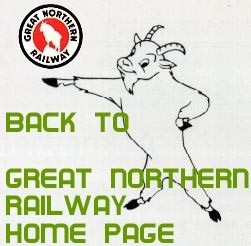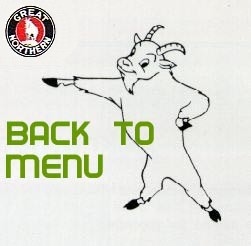|


| |
Special Instructions - Page 14

Engineers, when practicable, must operate helper engines from controls on the
right side.
Between Skykomish and Wenatchee, in handling trains of 5000 tons or over, see
that 15 heavily constructed cars with large A.A.R. drawbars and heavy draft
rigging are placed next behind engines with the heavy drawbar pull.
Helper engines on eastward tonnage trains will drop their regeneration load at
20 MPH at foot of 2.2 grade, Merritt, and pick it up again starting down Winton
Hill and will drop their regeneration load at 20 MPH when stopping at Dryden to
cut out helper.
Westward helper engines will not assist train engineer thru regeneration in
making final stop at Skykomish.
Holding capacity of each unit in regeneration as follows:
On 2.2% grade:
5010-5017.....1400 tons
5018-5019.....2800 tons
5000-5008.....1250 tons
On 1.6% grade:
5010-5017.....1900 tons
5018-5019.....4500 tons
5000-5008.....1750 tons
Tonnage rating of electric engines on 2.2 grade:
5010-5017.....1000 tons per unit,
5018-5019.....1900 tons per unit,
5000-5008.....750 tons per unit.
Steam derricks, ditchers, and other roadway machines must not be worked within
200 ft. of tunnel portals within the electrified territory unless power is
turned off on the trolley line.
Arrangements for handling of the power shall be made with Electrical
Superintendent or his representatives.
General Electric engines 5010 to 5017 inclusive, operating between Appleyard and
Skykomish, are equipped with high voltage connectors at the top of each end of
cabs so that when engines are coupled together these connectors contact each
other. These connectors are painted red, and when any pantograph of a coupled
number of these units is in contact with the trolley wire, all of these
connectors are energized.
Do not come in contact with these connectors.
Diesel freight engines, 5400 H.P., have the following tonnage ratings: 2.2
grades, 2000 trailing tons; 1.6 grades, 3000 trailing tons; 1.0 grades, 4800
trailing tons.
These 5400 H.P. diesel engines will handle 2000 tons, Skykomish to Berne, in
helper service and the same combination of electric engines should be operated
thru Skykomish to Berne.
Diesel engines will handle 1500 tons single thru Cascade tunnel eastward.
The electric holding brakes on these engines will hold at approximately 17 MPH
the same tonnage on a descending grade that the engine will pull up the grade at
continuous tractive effort. That is, the regenerative brake on these engines
will hold 2000 tons on a 2.2 grade, 3000 tons on a 1.6 grade and 4800 tons on a
1.0 grade at approximately 17 MPH. At either a higher or lower speed than this,
the engines will handle less than this maximum tonnage. On the 2.2 grade, diesel
engines should be cut into the train approximately 1800 tons from the rear end
which is the tonnage the diesel engines can hold with the electric brake at from
approximately 15 to 20 MPH.
This brake was not designed as a stopping brake, but is primarily for holding
trains on long grades and engineers in the electrified territory must not expect
diesel engine holding brake to have the capacity for slowing down heavy freight
trains that the electric engines have.
Diesel engines must not be cut in ahead of the electric engines in either
direction.
Engineers on diesel engines will not use any power to push train at any point
from Berne to Appleyard, except when stop is made at Winton, and then only to
get the train started at speed of 10 MPH.
All trains approaching Skykomish, with diesel engines cut in as helper, must
stop before passing automatic block signal 1731.3, east of east switch, before
proceeding into yard regardless of signal indication.
Diesel engines, 5400 H.P., operated on eastward freight trains thru Cascade
tunnel will be governed as follows:
1...Engage both cooling fans on all four units of the diesel leaving Skykomish
and control the engine cooling water temperatures between 155 and 165 degrees by
proper shutter regulation.
2...When diesel engine passes Scenic depot, open all four radiator shutters on
the two rear units wide open.
3...When diesel engine enters tunnel, reduce throttle to No. 6 position and
operate diesel engine thru tunnel in No. 6 throttle.
4...Regulate water temperature on the two leading cabs with the radiator
shutters to maintain a water temperature of between 155 and 165 degrees.
5...Hot engine alarms are set at 195 degrees and should the hot engine alarm
sound on either of the two rear cabs, isolate the unit with high temperature and
handle train on three units thru tunnel. Place the unit back on the line after
water temperature is reduced to normal and check water level in engine cooling
water tanks. Should the water level fall below minimum level as indicated in the
water glass, shut engine down.
6...If, for any reason, eastward trains being handled or helped by diesel
engines are stopped in tunnel, diesel engines must be closed down and members of
crew on both head end and rear end of train must communicate with each other on
telephones located in each bay of the tunnel and have a thorough understanding
with entire crew whether train will be backed out of tunnel or doubled out to
Berne. If backed out to Scenic, train must be stopped before passing east siding
switch and not back down main track unless protected by train order or flagman,
or backing in on siding, it must be known siding is clear. In making these moves
definite understanding must be had with all members of the crew as to what is to
be done to avoid accident.
7...Report maximum engine water temperature reached in tunnel each trip on the
engineer's work report on arrival at Appleyard.
29.....Skykomish, Spring switch indicator located at clearance point of east
switch of extension to eastward siding is connected with a repeat indicator at
crossover near signal 1731.4. These indicators govern train and engine movements
through spring switch at east end of siding extension.
This repeat indicator must not be operated, except when train rights and
operating rules permit movement through eastward siding extension without
stopping at clearance point of east switch. A yellow light displayed on repeat
indicator does not authorize movement beyond switch indicator at clearance point
of east switch which indicator must also display yellow light for continuous
movement.
SECOND SUBDIVISION
(Vancouver Line)
INSTRUCTIONS GOVERNING THE OPERATION OF STREAMLINER TRAINS BETWEEN EVERETT JCT.
AND VANCOUVER, B. C.
CLEARING OF STREAMLINERS.
The time of Nos. 355, 357 and 361 must be cleared by Southward first-class
trains not less than 5 minutes before Nos. 356, 357 and 361 are due to leave the
last station where time is shown, and by other Southward trains not less than 10
minutes before Nos. 355, 357 and 361 are due to leave the last station where
time is shown.
The time of Nos. 355, 357 and 361 must be cleared by Northward trains, except
Nos. 356, 360 and 362, not less than 10 minutes at all stations.
The time of Nos. 356, 360 and 362 must be cleared by Northward first-class
trains not less than 5 minutes before Nos. 356, 360 and 362 are due to leave the
last station where time is shown, and by other Northward trains not less than 10
minutes before Nos. 356, 360 and 362 are due to leave the last station where
time is shown.
 
 
|